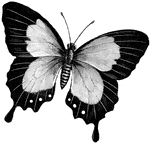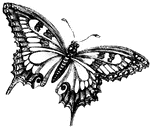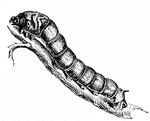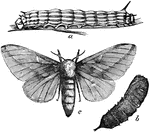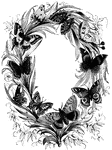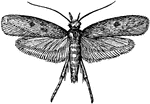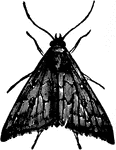
Hawk Moth
The hawk moth is well known by its habit of poising like a humming bird over the flower from which it…

Hawk Moth
The hawk moth is well known by its habit of poising like a humming bird over the flower from which it…

Hawk Moth
The hawk moth is well known by its habit of poising like a humming bird over the flower from which it…
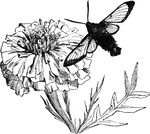
Hummingbird Moth
"A considerable number of insects belonging to Sphingina have transparents wings. Among them is the…

Chrysalis of the Luna Moth
"Among the larger and more splendid moths of our own country is the Luna Moth, or Green Emperor Moth,…
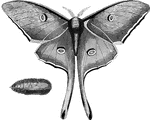
Luna Moth
"Among the larger and more splendid moths of our own country is the Luna Moth, or Green Emperor Moth,…

Caterpillar of the Luna Moth
"Among the larger and more splendid moths of our own country is the Luna Moth, or Green Emperor Moth,…
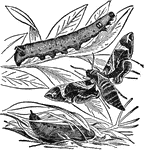
Hawk Moth
"Hawk Moth is a family of the lepidopterous insects, forming along with the clear winged moths and the…
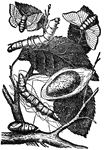
Silkworm
"Silk is the peculiar glossy thread spun by the caterpillars or larvae of species of moths, and a well-known…

Carpet Moth
Cidaria, a genus of moths characterized by having oblique bands with acute angles across the front wings.

Clear-Winged Moth
"These are wasplike moths of brilliant colors and have transparent wings. They generally fly by day."…

Sphinx Moth
"The Sphingina or Sphinx Moths, so callled from the curious havit which the larva have of raising the…

Sphinx Moth
"The Sphingina or Sphinx Moths, so callled from the curious havit which the larva have of raising the…
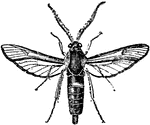
Sesiidae
"Clear-winged moths, Sesiidae, day-fliers, and looking more like bees, wasps, and ichneumons which they…
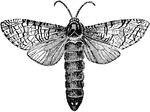
Bombycina
"Nocturnal moths, with the organs of the mouth in many cases so atrophied as to be unfit for use. These…

Bombycina
"Nocturnal moths, with the organs of the mouth in many cases so atrophied as to be unfit for use. These…

Bombycina
"Nocturnal moths, with the organs of the mouth in many cases so atrophied as to be unfit for use. These…

Bombycina
"Nocturnal moths, with the organs of the mouth in many cases so atrophied as to be unfit for use. These…

Noctuina
"The Noctuina form an eceedingly large group of nocturnal moths, although even here there are a few…

Noctuina
"The Noctuina form an eceedingly large group of nocturnal moths, although even here there are a few…

Geometrina
"The Geometrina in the larval condition have only four prolegs, the usual number being ten, and in moving…

Geometrina
"The Geometrina in the larval condition have only four prolegs, the usual number being ten, and in moving…

Pyralidina
"The Pyralidina are a group of small moths readily distinguished by their long slender bodies and large…
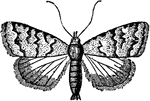
Pyralidina
"The Pyralidina are a group of small moths readily distinguished by their long slender bodies and large…
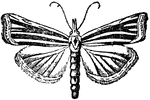
Pyralidina
"The Pyralidina are a group of small moths readily distinguished by their long slender bodies and large…

Pyralidina
"The Pyralidina are a group of small moths readily distinguished by their long slender bodies and large…
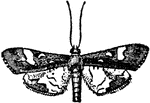
Pyralidina
"The Pyralidina are a group of small moths readily distinguished by their long slender bodies and large…

Tortricina
"The Tortricina include a great number of small moths exceedingly injurious to orchard and other trees.…

Tineina
"The Tineina contain the smallest of the Lepidoptera, and are best known as clothes moths. These clothe…

Tineina
"The Tineina contain the smallest of the Lepidoptera, and are best known as clothes moths. These clothe…
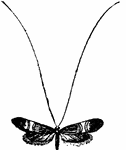
Tineina
"The Tineina contain the smallest of the Lepidoptera, and are best known as clothes moths. These clothe…
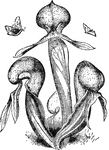
Darlingtonia
"Of the two forms of pitcher in this genus the larger and ordinary form, that of the adult plant, is…

Moth Lantern
From the well known nocturnal habits of moths, and the certainty of their being destroyed by a light,…
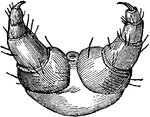
Scaly Legs of the Caterpillar of the Gipsy Moth (Liparis Dispar)
Representation of the scaly legs of the Gipsy moth.
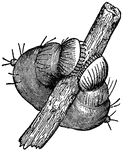
Membranous Legs of a Large Caterpillar Embracing a Twig
Representation of "the two membranous legs of a large caterpillar, of which the hooks of the feet are…
!["Represents the Looper caterpillar, with four membranous legs. If one of these caterpillars, lying quiet at full length, determines to walk, in order to take its first step it begins by humping its back, curving into an arch that part which has no legs, and finishes by [lying flat]"](https://etc.usf.edu/clipart/52200/52217/52217_looper_cater_mth.gif)
Looper Caterpillar
"Represents the Looper caterpillar, with four membranous legs. If one of these caterpillars, lying quiet…
!["Represents the Looper caterpillar, with four membranous legs. If one of these caterpillars, lying quiet at full length, determines to walk, in order to take its first step it begins by humping its back, curving into an arch that part which has no legs, and finishes by [lying flat]"](https://etc.usf.edu/clipart/52200/52221/52221_cater_arch_mth.gif)
Looper Caterpillar Curved into an Arch
"Represents the Looper caterpillar, with four membranous legs. If one of these caterpillars, lying quiet…
Looper Caterpillar at Full Length
"Represents the Looper caterpillar, with four membranous legs. If one of these caterpillars, lying quiet…
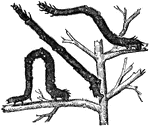
Caterpillar of the Canary-Shouldered Thorn
"Their attitudes deceive even the close observer; they embrace the stem of the leaf or twig with their…
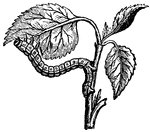
Looper Caterpillar Eating the Leaves of the Apricot (After Reaumur)
"When the caterpillar wants to gnaw the edge of a leaf, it twists its body in such a way that at least…
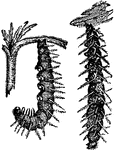
Caterpillars of the Small Tortoise-shell Butterfly (Vanessa Urticae) Undergoing Their Metamorphoses
"They select some convenient spot, where they hang themselves up, head downward."
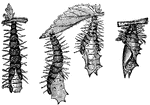
Chrysalides of the Small Tortoise-shell Butterfly Freeing Themselves from the Caterpillar Skin
"To set itself entirely free, the chrysalis alternately lengthens and shortens itself. The old skin…

Chrysalis Divested of the Larva Skin
"Magnified, represents the chrysalis arrived a its final state, and suspended to a branch of a tree…

Caterpillars of the Cabbage-Butterfly
"Shows how the head advances over half the circumference of the circle which it has to describe, and…

